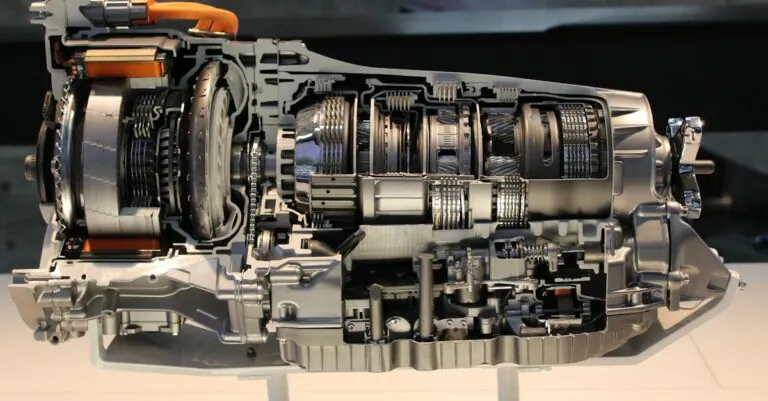Table of Contents
ToggleIn a world where cyber threats lurk around every digital corner, having a robust firewall appliance is like having a bouncer at the hottest club in town. It ensures only the right traffic gets in while keeping the riffraff out. But not all firewall hardware is created equal. Some are like that overly enthusiastic bouncer who checks IDs for everyone, while others are more laid-back, letting in a few troublemakers.
Choosing the right firewall appliance hardware can feel like finding a needle in a haystack, but it doesn’t have to be a chore. With the right guidance, you can secure your network without sacrificing performance or breaking the bank. So buckle up and get ready to dive into the world of firewall appliances, where protection meets performance, and your network’s safety is just a decision away.
Overview of Firewall Appliance Hardware
Firewall appliance hardware plays a crucial role in network security. These devices monitor and control incoming and outgoing network traffic based on predetermined security rules. Various types of firewall appliances exist, including hardware-based solutions and software-based options. Hardware firewalls typically offer faster performance due to dedicated processing power and resources.
Models vary significantly in terms of capabilities and performance metrics. Some appliances prioritize high throughput and low latency, making them suitable for large enterprises. Others focus on specialized features, such as intrusion detection and prevention systems. Selecting the appropriate device involves evaluating specific organizational needs and threat landscapes.
Performance specifications are essential when choosing firewall hardware. Throughput rates often range from hundreds of megabits per second to several gigabits per second, depending on the model’s design. Additionally, the capacity to handle simultaneous connections affects performance, especially in environments with heavy traffic.
Scalability is another vital aspect when assessing firewall appliances. Some models easily expand to accommodate growing network demands. Integrated features, such as VPN support and application layer filtering, enhance functionality, protecting sensitive data from various cyber threats.
Durability and reliability are imperative in firewall hardware selection. Devices should maintain consistent performance levels under high demand without compromising security. Evaluating manufacturer warranties and support services ensures device longevity and optimal operation.
An effective firewall appliance incorporates advanced features, such as threat intelligence. Machines that utilize machine learning can adapt to evolving threats, providing proactive protection. Reviewing these capabilities fosters informed decision-making when investing in firewall hardware.
Key Features to Consider
When selecting firewall appliance hardware, key features significantly influence network security performance. Evaluating these aspects ensures the chosen solution meets specific needs.
Performance Specifications
Performance specifications dictate how effectively a firewall appliance manages traffic. Throughput rates represent the maximum data transfer speed a device can handle, usually measured in Mbps or Gbps. Assessing latency is crucial, as it affects the response time for data packets. Some models handle thousands of simultaneous connections, a requirement for high-traffic environments. Furthermore, examining the processing power of the appliance reveals its ability to inspect traffic deeply without sacrificing speed. Advanced features like SSL decryption enhance security but may impact performance; balancing these factors remains vital.
Scalability Options
Scalability options ensure a firewall appliance adapts to growing network demands. Some models support additional hardware modules or licenses to increase capacity as needed. Consider solutions that offer virtual instances, enabling rapid deployment for evolving environments. Compatibility with existing infrastructure maintains efficiency, allowing seamless integration without extensive modifications. Certain appliances provide centralized management features, which simplify oversight and adjustments across multiple units. Evaluating how easily a device expands while maintaining security features will aid in long-term investment decisions.
Types of Firewall Appliance Hardware
Firewall appliance hardware varies significantly, impacting security and performance. Understanding these types allows for better decision-making based on specific network needs.
Hardware-Based Firewalls
Hardware-based firewalls provide dedicated resources for traffic management. They install between the network and the gateway, filtering incoming and outgoing packets. These appliances typically enhance performance due to their independent processing capabilities. Businesses often favor them for high-traffic environments, where maintaining low latency and high throughput is essential. Integrating advanced features, such as VPN support and intrusion detection systems, further strengthens their security posture. Manufacturers often assure durability and reliability, making these firewalls a robust choice for organizations focused on sustained protection.
Virtual Firewalls
Virtual firewalls operate as software-based solutions within virtualized environments. These appliances adapt easily to fluctuating network demands, providing flexibility for dynamic workloads. By leveraging the underlying infrastructure, they optimize resource usage without requiring dedicated physical hardware. Many organizations utilize virtual firewalls for cloud environments or multi-tenant architectures due to their cost-effectiveness. Integration with existing security suites often enhances their capabilities, allowing for centralized management. As virtualization continues to grow, employing virtual firewalls becomes increasingly attractive for organizations seeking scalable security solutions.
Leading Brands and Models
Several leading brands offer robust firewall appliance hardware, each with unique features tailored for varying network needs.
Brand A: Features and Benefits
Cisco stands out for its comprehensive security solutions. Its firewalls deliver high throughput and support for numerous simultaneous connections. Users benefit from advanced threat protection and seamless integration with existing security infrastructure. The intuitive management interface simplifies network oversight, enhancing overall efficiency. Additionally, Cisco’s extensive support resources provide customers with ongoing assistance and updates, ensuring long-term reliability.
Brand B: Unique Selling Points
Palo Alto Networks demonstrates excellence in next-generation firewall technology. Their appliances utilize machine learning to optimize threat detection and response. Notable for application awareness, these devices enable precise traffic control based on application type rather than port. Furthermore, the inclusion of advanced security subscriptions enhances overall network protection, providing tools for visibility and enforcement. Organizations often appreciate Palo Alto’s scalability, allowing expansion as network demands grow.
Installation and Configuration
Setting up a firewall appliance involves multiple steps to ensure optimal performance and security. Begin by choosing a suitable location for the device, ideally in a secure area near the network’s entry point. Proper placement enhances protection against external threats while ensuring easy access for maintenance.
Connecting the hardware to the network demands careful attention. Use Ethernet cables to link the firewall to both the modem and network switches. Employ power sources that comply with the device’s requirements, ensuring a stable energy supply.
Configuring the appliance requires accessing the management interface. Typically, this involves entering a specified IP address into a web browser. Upon logging in, users encounter various settings that dictate traffic management, security rules, and logging options.
Defining security policies stands as a critical aspect of configuration. Users must specify allowed and blocked traffic types, guiding how the device reacts to different network activities. Implementing advanced features, such as intrusion detection systems, strengthens protection but may demand additional configuration.
Updating firmware also plays a vital role in maintaining security. Manufacturers regularly release updates to address vulnerabilities, and checking for these updates should occur routinely. Scheduling regular checks for updates minimizes risks associated with outdated software.
Finally, testing the configuration ensures it operates as intended. Conducting traffic flow tests reveals any misconfigurations, while utilizing tools for vulnerability assessments identifies potential weaknesses. By following these steps, organizations can effectively install and configure their firewall appliance, maximizing network security and efficiency.
Maintenance and Support
Routine maintenance and support are crucial for the long-term effectiveness of firewall appliance hardware. Regularly updating firmware ensures the device incorporates the latest security patches, addressing vulnerabilities that cyber threats may exploit. Technical support from the manufacturer plays a vital role in resolving issues swiftly and implementing best practices for security management.
In terms of maintenance, periodic audits of configuration settings help identify any areas needing adjustment to enhance security measures. Additionally, monitoring performance metrics, such as throughput rates and connection handling, enables proactive identification of potential bottlenecks. Investing in support services can significantly reduce response times during critical incidents, minimizing network downtime.
Scheduled hardware inspections facilitate the detection of physical issues that could impair functionality over time. These inspections often include checking power supplies, cooling systems, and network connections. Manufacturers frequently provide comprehensive warranties, which cover repairs or replacements for defective components, reinforcing reliability.
End-user training is also essential. Staff should understand how to interact with the firewall management interface, ensuring they can manage rules and policies effectively. Incorporating training sessions within the organization can maximize the benefits of the firewall appliance, enhancing the overall security posture.
Documentation from manufacturers typically outlines both maintenance practices and support resources. Familiarity with available support channels, including online chat, phone support, and community forums, can expedite issue resolution. Access to robust technical resources aids organizations in utilizing their firewall hardware to its fullest potential.
Choosing the right firewall appliance hardware is essential for robust network security. With various options available organizations must consider performance scalability and reliability. The right balance of these factors can significantly enhance protection against cyber threats while ensuring efficient traffic management.
Investing in high-quality firewall hardware from reputable brands can provide long-term benefits. Regular maintenance and updates are crucial for maintaining optimal performance. By following best practices in installation and configuration organizations can maximize their firewall’s effectiveness and safeguard their networks against evolving threats.







